Lesson
Structure of a Yearbook
Here are some of the common features that you will find in a yearbook:
Cover
- The cover of the yearbook can be made of a variety of materials and treatments such as embossing, foiling, or cutouts.
- Generally speaking, the fancier the cover, the higher the price. Yearbook companies offer eye-catching stock covers for budget-minded staffs.
- Some schools maintain a cover tradition, keeping a uniform appearance from year to year.
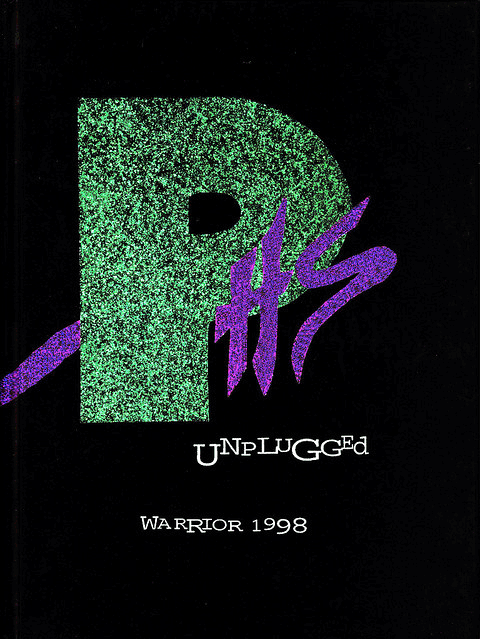
Image couresy of PHS98
End Sheets
- The end sheets are usually made of heavier weight paper. They hold the pages into the book binding.
- Some staffs keep the end pages plain white in order to have space for signatures/greetings.
- Some staffs choose to make the end sheets decorative or contain thematic elements.
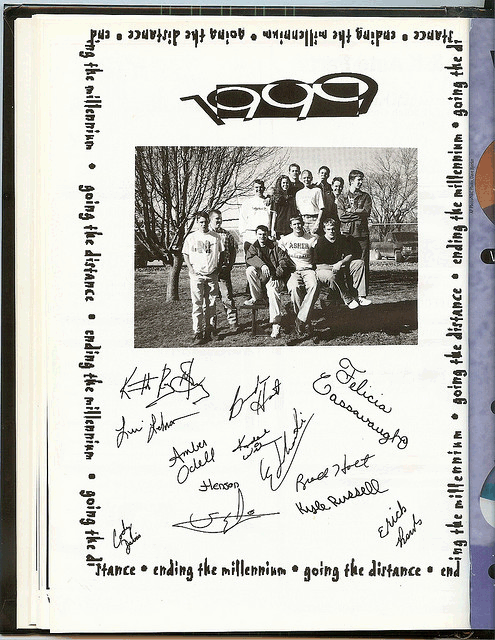
Image couresy of Asherok
Signature
- Yearbooks are actually printed on large pieces of paper that are folded to create a unit of pages.
- For yearbooks, a signature represents a 16 page unit.
- Yearbook companies usually require design work to be submitted as a signature rather than page by page.
Spread
- Two facing pages.
- When people look at yearbook, they look at two facing pages as a set or unit. Yearbook staffs usually design facing pages together as a group for visual continuity.
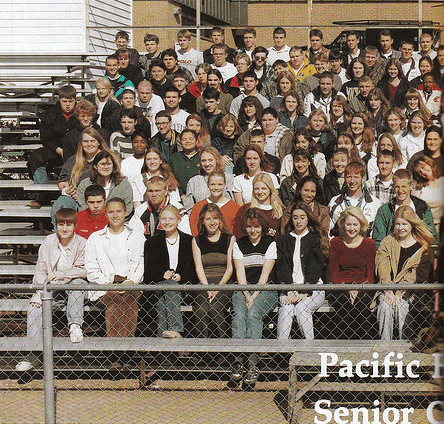
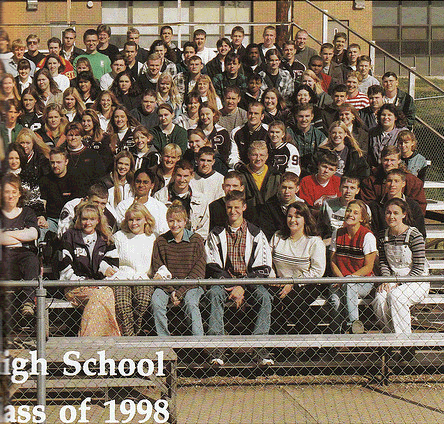
Gutter
- The "crack" of the book, or the space between two facing pages.
- Although photos can "cross the gutter", or span across the middle of facing pages, you run a serious risk of distortion caused by the binding process.
- Copy should not be placed in or through the gutter. You could "lose" entire words that way!

Image couresy of Asherok
Natural Spread
- The center spread of a 16 page signature has pages that naturally face each other. Because of the binding process, the gutter of a natural spread will not be affected.
- Photos and copy can cross the gutter on the natural spread without fear of distortion!
- In the 1st signature, the natural spread would occur on pages 7-8, the center spread.
Table of Contents
- A page that details the various sections of the yearbook and the page numbers they span.
- Some staffs choose to place the table of contents on an end sheet. Others place it in the first signature, most often on the first or second page.
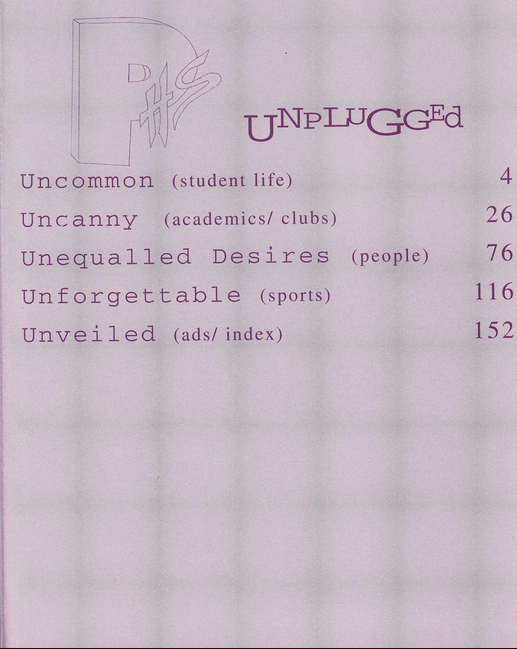
Image couresy of PHS98
Folio
- The page number.
- Wherever a staff chooses to place page numbers, that spot should remain consistent throughout the book. The folio should also be the same font and size throughout the book.
- Some staffs include a small graphic with the folio or copy that indicates the section of the book.

Image couresy of PHS98
Divider Pages
- Pages designating a new section of the yearbook. Traditionally, dividers are used as beginning points for people sections, club sections, sports sections, and advertisements.
- Usually, the divider pages highlight the yearbook's thematic elements.
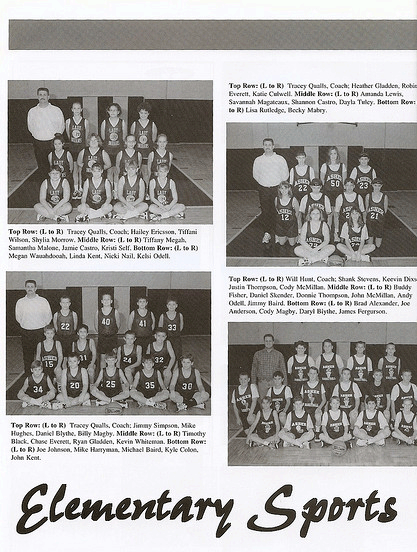
Image couresy of PHS98
Bleeds
- Photographs that appear to continue off the end of the page rather than stopping at a predetermined border.

Image couresy of PHS98
